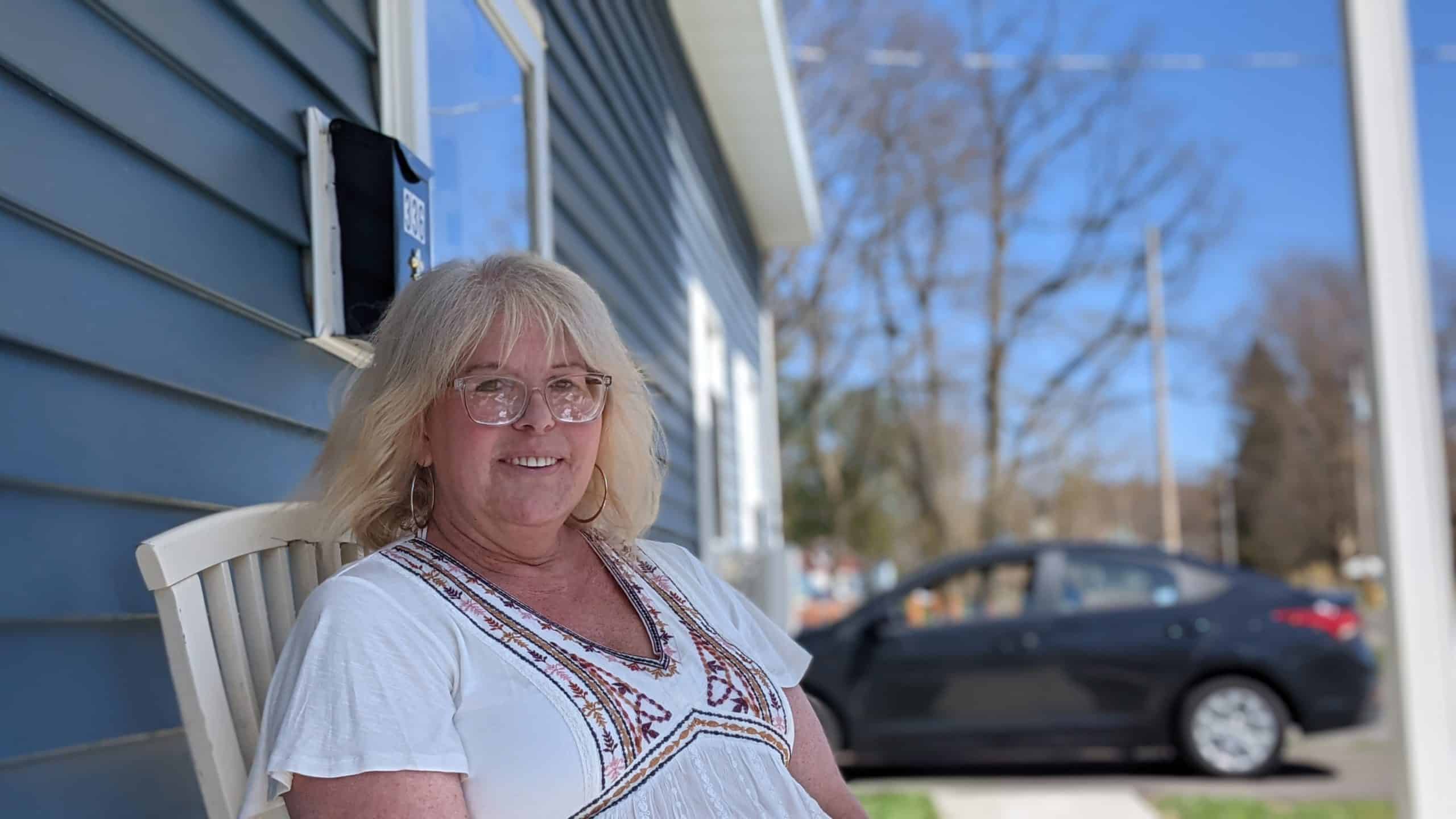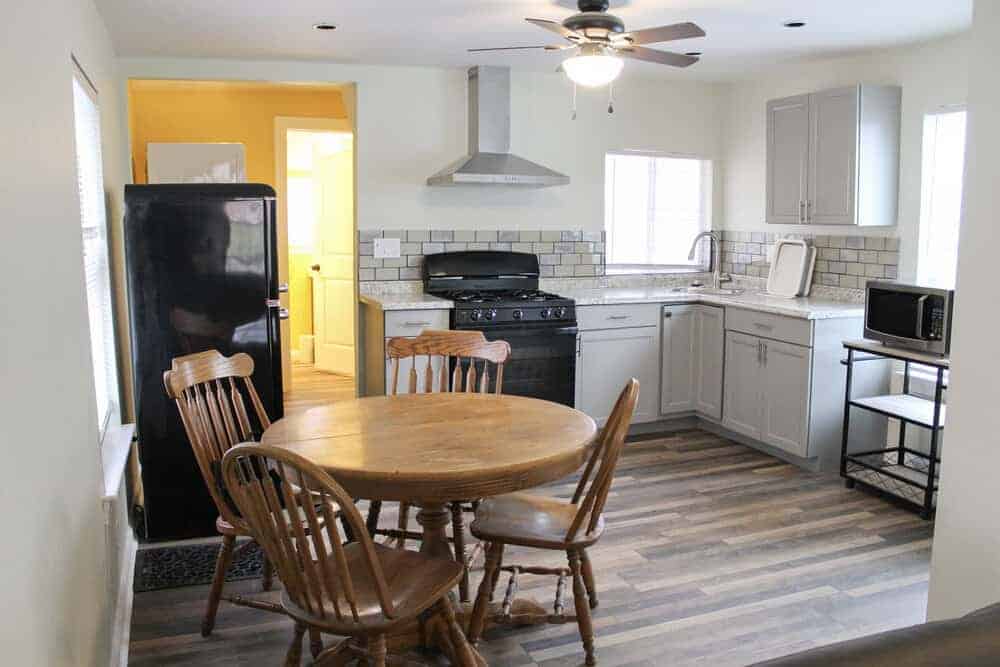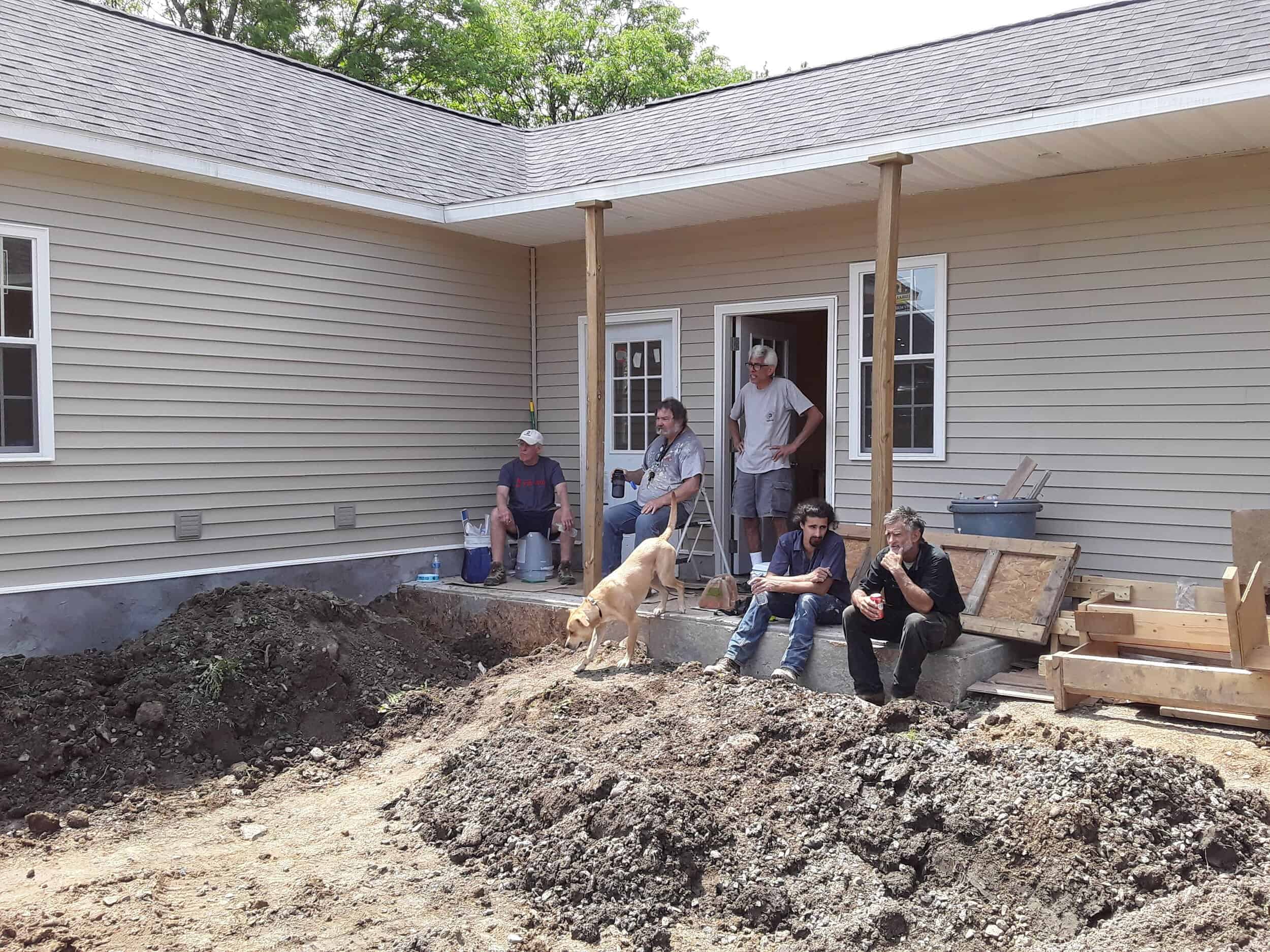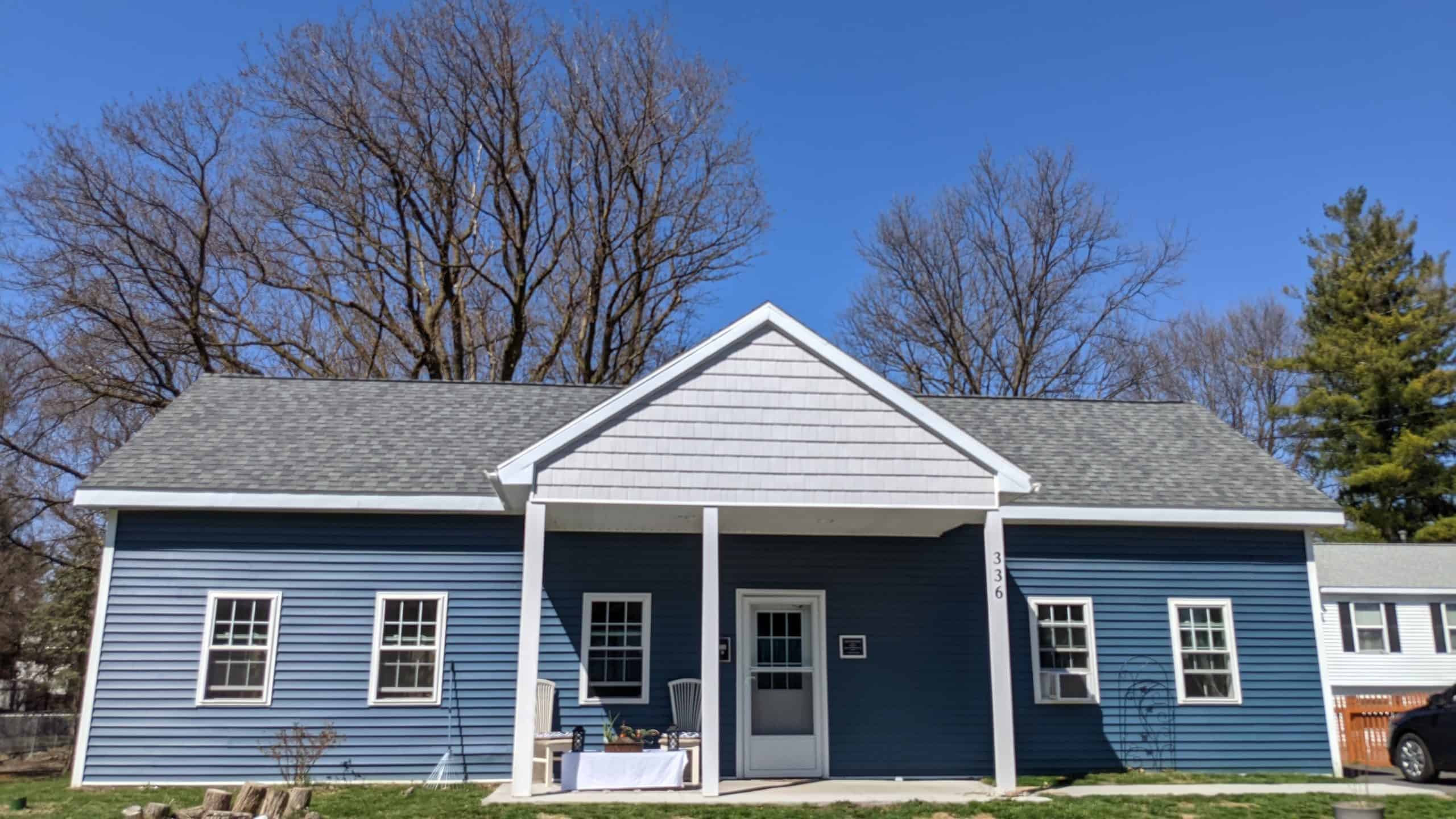Their Own Key and Their Own Door
The nonprofit “A Tiny Home For Good” offers a new approach providing supportive, long-term housing to CNY residents facing homelessness. Six years into their mission, they are preparing to move into a home of their own for the first time.
Published May 11th, 2021
What does it fundamentally mean to provide someone with housing? For Andrew Lunetta, it comes down to much more than just a roof and a bed. Effective housing solutions give the person a place they can feel safe, make their own, and have dignity, Lunetta argues. This holistic approach to combat homelessness forms the philosophy behind his nonprofit organization A Tiny Home for Good which was founded in 2015. Their model challenges many of the traditional assumptions about what affordable housing and housing for the homeless looks like.

Jeanette has been a Tiny Home resident for two years, during which time she has improved her health, maintained her sobriety, and rediscovered her love of gardening.
While studying at Lemoyne College, Lunetta worked at a local homeless shelter where he regularly saw the same residents moving in and out. “It drove me little crazy because we celebrated when they moved out as if they had beaten homelessness, but then they would often be back in sometimes just weeks.” Lunetta explains that many shelters have preset limitations when you move in. There is often a cap as to how long you can stay there, with residents having to leave after a set amount of time. “It really felt like this revolving door, and everyone told me that all they wanted was their own place: their own key, their own door. None of that sounded unreasonable to me.”
After reflecting on the available housing options, Lunetta wondered if it would be possible to create permanent, individual homes for people while charging far less than normal market value. “The market doesn’t provide for $300 per month housing that is dignified and safe,” he says. Lunetta recognizes the need for for-profit landlords, but also understands that many people simply do not have the resources to pay normal rent prices. Rooming houses do exist for around $400 per month, but they are often a temporary, shared situation.
An example of a two-person “Tiny Home” built by Lunetta’s organization. Their is a shared kitchen and lounge area, but each resident has their own bedroom, bathroom, and private living room.
Motivated by the goal of creating permanent, independent housing solutions for those in need, Lunetta incorporated his nonprofit organization A Tiny Home for Good in 2014. His model was to buy small, inexpensive vacant lots, build a small home on it, and then rent it out at a flexible price. Many landowners were open to selling unused land cheaply, and others simply donated it to avoid the tax burden.
Through his own labor, volunteer efforts, and the work of his team, A Tiny Home for Good builds all of their houses themselves at a cost of roughly $40,000 per tiny home. Lunetta says that many people balk at this number, but he argues that it pays off in the long game: “If you look at the costs of someone staying in a shelter, plus the added costs of jailtime, hospital stays, and other things that often accompany homelessness – it’s way, way cheaper to build one of these and just give someone the keys.”
For Jeanette, a resident in one of the “Tiny Homes” on Syracuse’s south side, the opportunity provided a much-needed sense of safety and security. “I felt like I could finally take a breath, and that hadn’t happened in a long time.” Jeanette describes herself as having been a normal middle class working mother until a motorcycle accident led her to develop an addiction to pain killers. Once the prescription ended, she turned to heroin. She was ultimately able to overcome her opioid addiction, but found herself in the shelter system without the necessary funds to find her own apartment.

Residents of a Tiny Home have the ability to paint or decorate as they wish. An important part of the goal is for the tenant to be comfortable and feel ownership of their space.
There were permanent housing options available in the form of boarding houses, but she says the conditions were so horrific that even her case manager would often refuse to accompany her inside to tour the building. “I would have been the only woman living in a shared space with multiple sex offenders,” she explains. “The mattresses were urine soaked, there were mice and cockroaches.” Jeanette questions how anyone could be expected to live, let alone thrive, in that environment. “At that point it’s just day to day survival.”
Before long, Jeanette was rapidly approaching the end of her stay at the addiction treatment center but had yet to find a permanent place to live. She had been in contact with Andrew Lunetta but until then he did not have any space for her. Just as her time was running out, he called and asked, “Are you ready to move?” They had finished construction on a new Tiny Home and she would be able to move in within the month. Before long, Jeanette had gotten to know nearly all of her new neighbors, she had enrolled in computer classes at the Syracuse Educational Opportunity Center, found a job at the Town & Country Animal Hospital, and rediscovered her love of gardening. She also noticed that her blood pressure and blood sugar levels went down considerably after she had settled into her new environment. Most of all, she felt that Lunetta and the rest of the organization had her back. “If anything goes wrong – he’s here.”
Currently, roughly half of the budget for A Tiny Home for Good comes from private donations. Another 25% comes from the renters’ contributions and Foundation grants, and the final 25% comes from contracts with government. “Onondaga County has started funding us to do some construction over these last two years because they saw that they were saving money by putting someone in a house rather than just paying for shelter fees over the course of a year.”
The process typically takes six months, from the point of finding the land to handing over the keys to the new renter. The organization maintains the title, and renters pay 30% of their annual income. This amount is flexible, so if renter loses their job or other benefits – their rent goes down as well.

Construction is done primarily by the Tiny Home For Good team themselves, along with help from volunteer workers.
Normalcy is an essential component of Lunetta’s model: the houses are spread across the city which avoids a cluster of these tiny homes becoming their own village, “othered” from the rest of the city residences. Ahead of construction, the organization sits down with the neighbors to make sure that they are understanding and open to the new residence being built in their area. Furthermore, tenants are encouraged to make their homes their own by painting it how they want or making other aesthetic changes that would make them more comfortable. There is no drug testing, job application requirement, or time limit that renters must adhere to.
To date, A Tiny Home for Good has built 28 units. 25 of these are tiny homes, and the other three are normal sized houses that his team has rehabilitated. That translates to roughly 35 people who they are currently housing. “It’s not a huge number,” says Lunetta, “but it’s quality over quantity. We are really investing in our 35 tenants in a way that I’m really proud of.” He is transparent about the fact that the tiny homes themselves are only part of the overall solution to providing robust affordable housing options. “I don’t think that having 100 tiny homes would be smart for a city the size of Syracuse. And even if we had that, it wouldn’t solve homelessness. There would still be people who can’t afford market rate rent.” In view of this, he is expanding his work into other sized homes more appropriate for families rather than individuals. He also argues that there is a shared responsibility among community stakeholders to fund permanent, dignified, housing options for people who simply cannot afford even a $500/month rent.
Next on the horizon for Lunetta is to move into their new headquarters on South Ave. Up until now, construction was always done on site and materials were scattered all over Syracuse at different tiny home locations. This presented two problems: they were constantly on the move from one location to another, and work was impossible during inclement weather – a constant struggle in the northeast. Through a grant from The Gifford Foundation and other funding support, A Tiny Home for Good was able to purchase a large warehouse space where they will be able to build the houses year-round, put them on a trailer, and then move them across town to their final destination when complete.
By the winter of 2021, this space should be fully functional. When asked if readying the new headquarters was their primary goal for the year, Lunetta shook his head firmly. “The end goal is keeping our tenants happy and healthy – the new space is just a way for us to do that better.”



